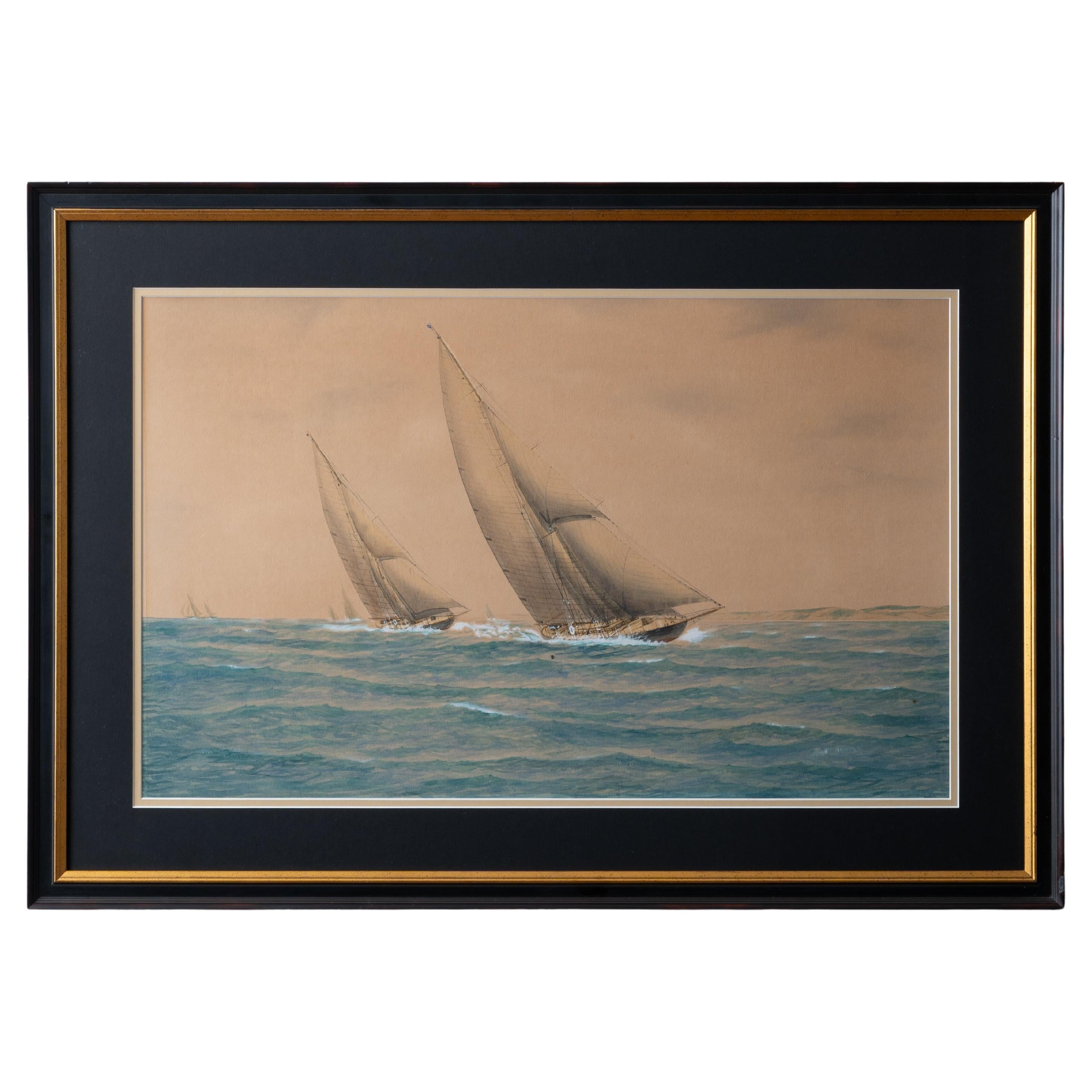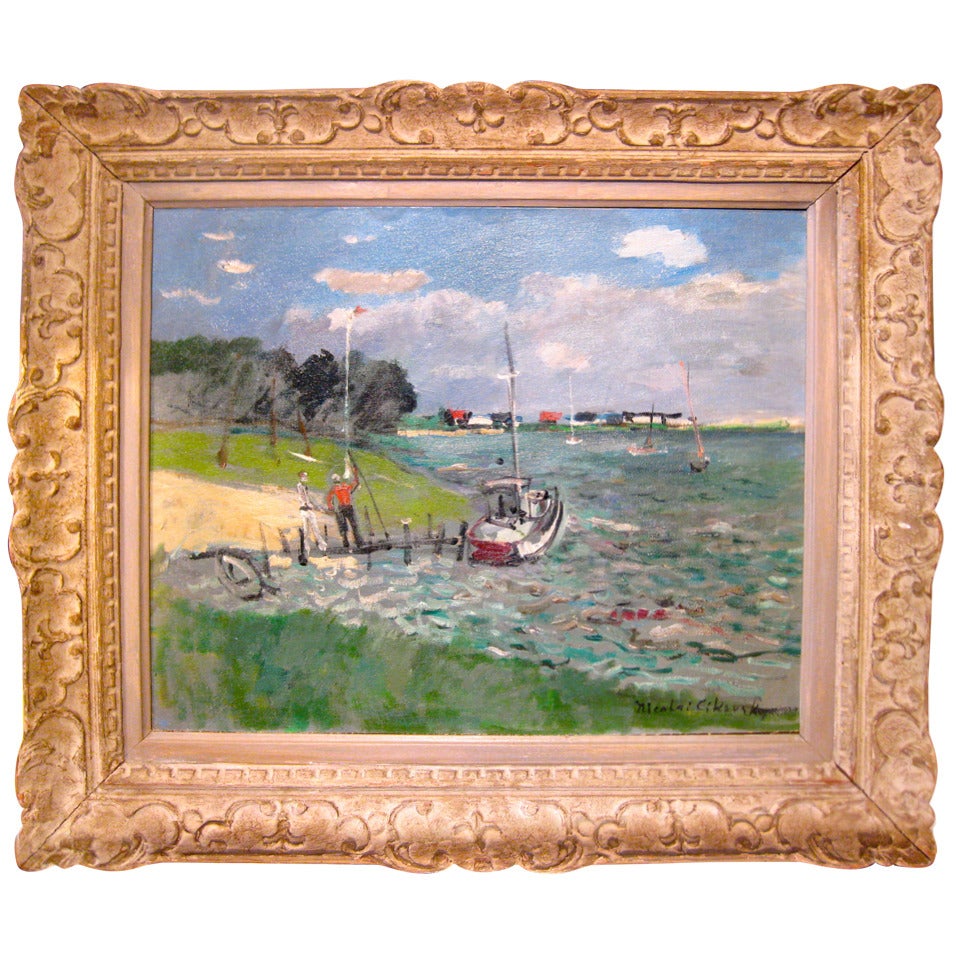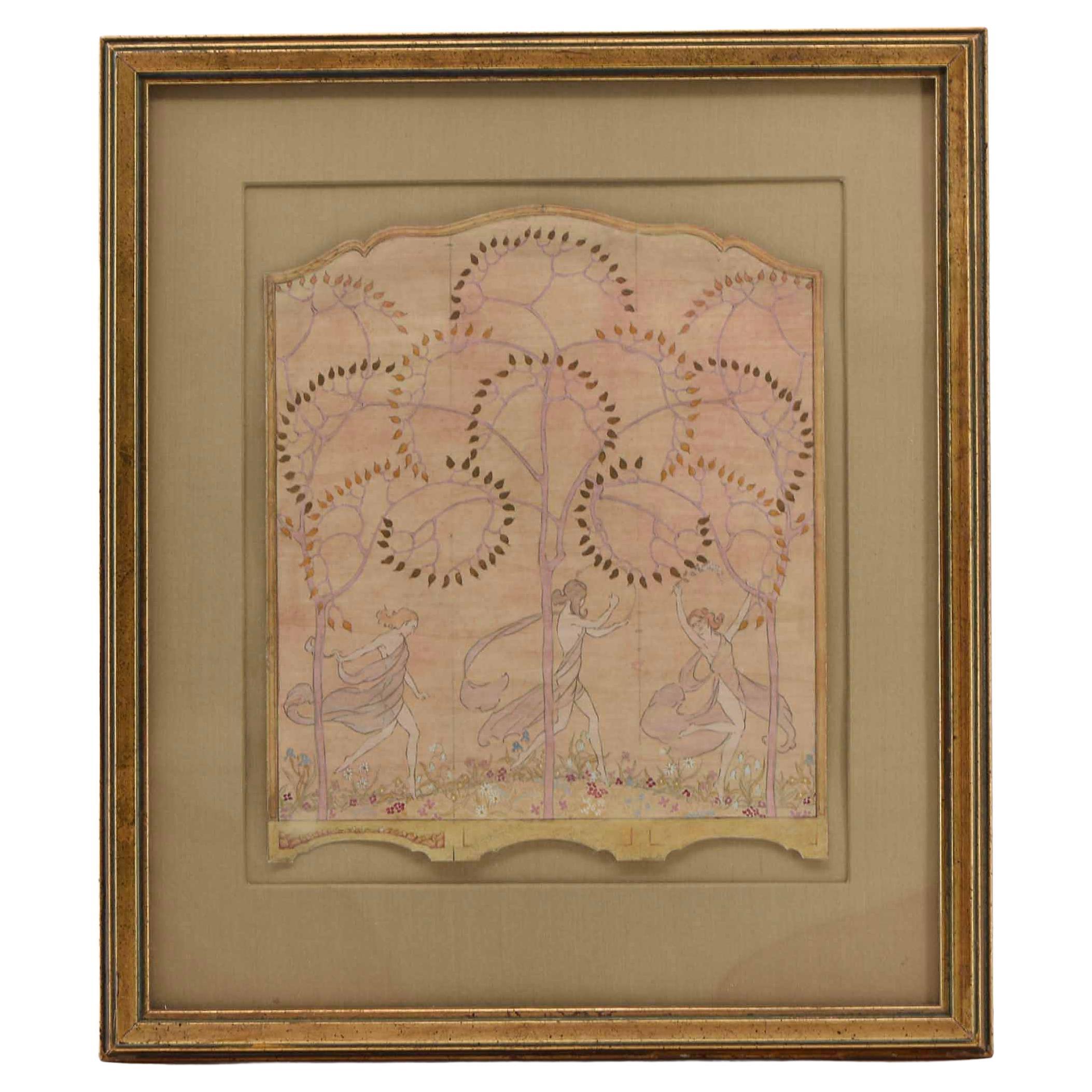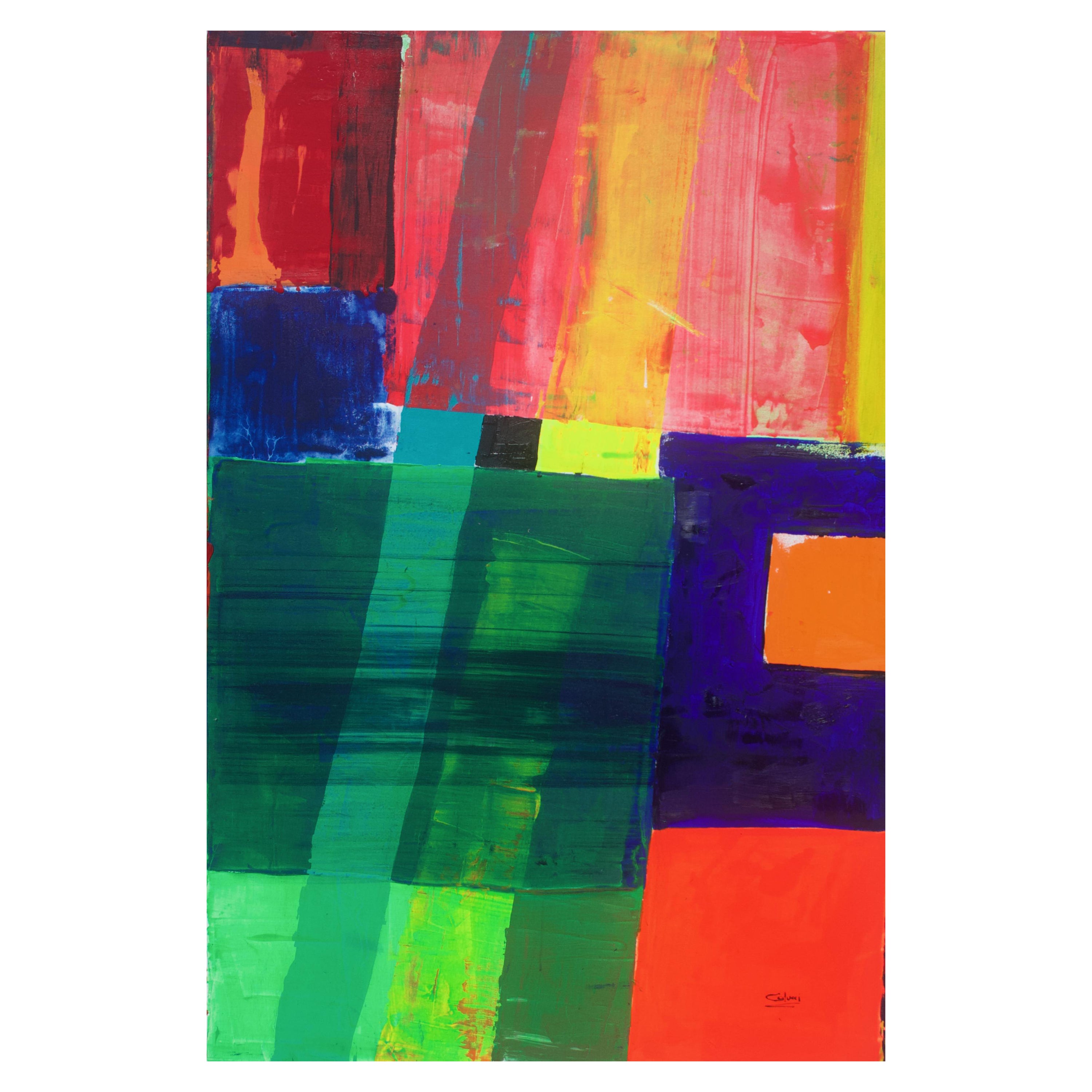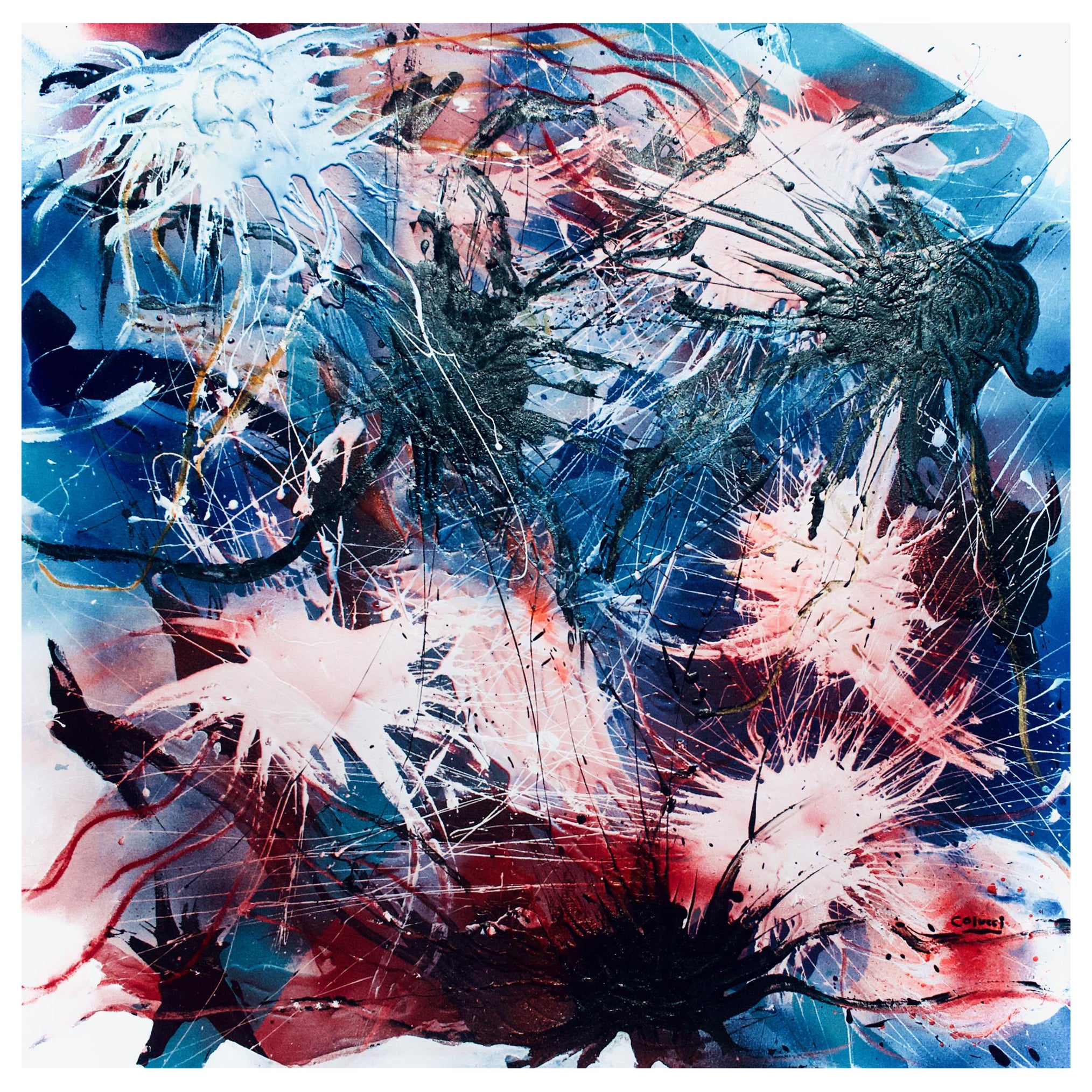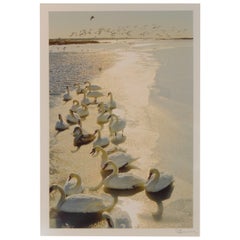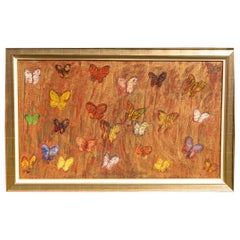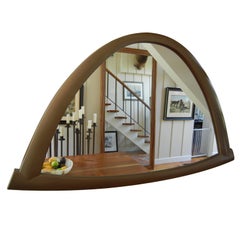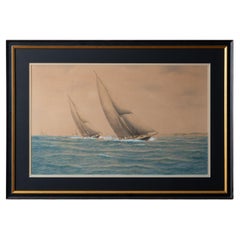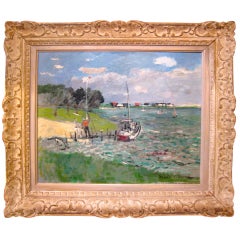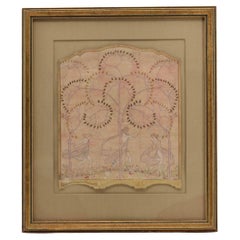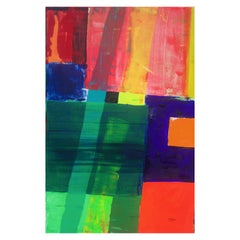Items Similar to 'Pears" by Long Island N.Y. Artist Steven Klein
Want more images or videos?
Request additional images or videos from the seller
1 of 4
'Pears" by Long Island N.Y. Artist Steven Klein
About the Item
Acrylic on Canvas,pear group by Long Island Artist Steven Klein.Golden pears ,shadowing onto a black back ground and framed in a three dimensional wooden frame.
- Dimensions:Height: 14 in (35.56 cm)Width: 23 in (58.42 cm)Depth: 2 in (5.08 cm)
- Style:Art Nouveau (Of the Period)
- Materials and Techniques:
- Place of Origin:
- Period:
- Date of Manufacture:20th century
- Condition:Excellent condition.
- Seller Location:Bellport, NY
- Reference Number:1stDibs: U10081680462031
About the Seller
5.0
Vetted Professional Seller
Every seller passes strict standards for authenticity and reliability
Established in 1995
1stDibs seller since 2005
214 sales on 1stDibs
Typical response time: 1 hour
- ShippingRetrieving quote...Shipping from: Bellport, NY
- Return Policy
Authenticity Guarantee
In the unlikely event there’s an issue with an item’s authenticity, contact us within 1 year for a full refund. DetailsMoney-Back Guarantee
If your item is not as described, is damaged in transit, or does not arrive, contact us within 7 days for a full refund. Details24-Hour Cancellation
You have a 24-hour grace period in which to reconsider your purchase, with no questions asked.Vetted Professional Sellers
Our world-class sellers must adhere to strict standards for service and quality, maintaining the integrity of our listings.Price-Match Guarantee
If you find that a seller listed the same item for a lower price elsewhere, we’ll match it.Trusted Global Delivery
Our best-in-class carrier network provides specialized shipping options worldwide, including custom delivery.More From This Seller
View All"The Swans of Squassex, " by Photographer Patrice Casanova, Long Island, NY
By Patrice Casanova
Located in Bellport, NY
A swan ballet by renowned Photographer Patrice Casanova. Limited addition of 20 images. Image size 12 x 17, framed 18 x 25 inches.
Category
Late 20th Century American Art Nouveau Photography
Materials
Paper
Daniel J O'Keefe, the Flag Series, NY, 2016
Located in Bellport, NY
Daniel J O'Keefe quoted by Peter Hastings Falk on "Life Bio" as one of the rediscovered masters. Dan is constantly evolving and continues to surprise his loyal followers with breath...
Category
21st Century and Contemporary American Modern Paintings
Materials
Plaster
Hunt Slonem 1951 'Red Ascension, Oil on Canvas 2008
By Hunt Slonem
Located in Bellport, NY
Hunt Slonem's most iconic subject "Butterflies" titled 'Red Ascension" Oil on canvas. A simple subject brought to life with his genuine love of nature ...
Category
Early 2000s American Modern Paintings
Materials
Paint
Price Upon Request
Wall Mirror by Studio Craft Artist David N. Ebner
By David N. Ebner
Located in Bellport, NY
An unusual pigmented bronze wall mirror by renowned studio Craft artist David N. Ebner. David will be selecting several pieces from his collection ...
Category
21st Century and Contemporary American American Craftsman Wall Mirrors
Materials
Wood
$3,800 / item
Stool #1 by American Studio Craft Artist David N. Ebner
By David N. Ebner
Located in Bellport, NY
Stool #1 by American studio Craft artist David N. Ebner. Beautifully crafted in a pigmented bronze finish. David will be selecting a few pieces from his co...
Category
21st Century and Contemporary American American Craftsman Stools
Materials
Bronze
"MFA" Bench by American Studio Craft Artist David N. Ebner
By David N. Ebner
Located in Bellport, NY
An MFA (Museum of Fine Arts) burnished blue milk paint bench over maple wood, by American studio Craft artist David N. Ebner.
Note: All works signed by the artist, David N. Ebner....
Category
21st Century and Contemporary American American Craftsman Benches
Materials
Wood, Paint
You May Also Like
Jay Arnold - Long Island Sound
Located in Savannah, GA
Jay Arnold
(American, b.1890)
A watercolor painting of sailing yachts in Long Island Sound, circa 1920s.
sight: 24 ¾ by 15 ¼ inches
frame: 32 by 22 ½ inch...
Category
Vintage 1920s American Other Paintings
Materials
Glass, Acrylic, Wood, Paper
Nicoloi Ciksvsky American, "Coldspring Pond, Southampton Long Island"
Located in Southampton, NY
Nicoloi Ciksvsky American.
Category
Vintage 1930s American American Craftsman Paintings
Watercolour Drawing by Kenneth Stevens MacIntire of a Three Fold Screen
By Kenneth Stevens MacIntire
Located in Norwich, GB
A lovely watercolor of a three-fold screen design depicting dancing women amongst flowers and trees. Kenneth Stevens MacIntire (American, 1891-1979).
Delivery is INCLUDED for all ...
Category
20th Century American Art Nouveau Paintings
Materials
Paper
Mixed Media Painting by Steven Colucci
By John Byard
Located in New York City, NY
Steven Colucci’s iconoclastic approach to performance and the visual arts
have not only long blurred the boundaries between these disciplines, but have
challenged its most basic assumptions. The title of this show references a
most rudimentary dance move --the plié --and our assumptions of what to
expect in relation to this. Also the suggestion that we can simply press a
button and a preconceived outcome will be courteously delivered --a form of
prefabricated belief in itself. Steven Colucci’s artwork turns such basic
assumptions on their heads. Finding early inspiration in the New York school
of abstract expressionists such as Jackson Pollock with his action painting,
and then further by his professor --a then young Vito Acconci while studying
at the School of Visual Arts, Steven Colucci went from exploring the raw
existentialist experimentation of New York’s early painting and performance
scenes, to investigating the other end of the spectrum --the rigorously
measured and controlled disciplines of pantomime and ballet; studying in
Paris under the tutelage of world-famous Marcelle Marceau, and engaging
with the concepts of dramatic movement pioneer and intellectual Etienne
Decroux. Colucci has explained the difference between the extremes of
pantomime and dance as being that pantomime forces movement via an
internal capacity --movement directed inward to the core of one’s self --a
source requiring extreme mental and physical control. Dance by contrast is
an external expression; likewise requiring great precision, although instead
an extension of self or sentiment that projects outwardly. While such
historical ‘movement’ disciplines serve as foundation blocks for Steven’s
artistic explorations, it is the realm in between that he is best known for his
contributions --an experimental movement and performance art that
simultaneously honors, yet defiantly refutes tradition; rejecting a
compartmentalization regarding art and movement, yet incorporating its
elements into his own brand of experimental pastiche. Colucci’s performance
works manifest as eerily candy-coated and familiar, yet incorporate
unexpected jags of the uncanny throughout, exploiting a sort of coulrophobia
in the viewer; an exploration of a cumulative artifice that binds human
nature against its darker tendencies; highlighting traditions of artifice itself -
the fabricated systemologies that necessitate compartmentalization in the
first place.
It is evident in Steven Colucci’s paintings that he has established a uniquely
distinctive pictorial vocabulary; a strong allusion to --or moreso an extension
of --his performance works. Colucci’s paintings depict a sort of kinetic
spectrum, or as he refers to them “a technical expression of physicality and
movement”. Whereas the French performance and visual artist Yves Klein
used the human body as a “paint brush” to demarcate his paintings and
thereby signify a residue of performance, Colucci’s utilization of nonsensical
numbers and number sequences taken from dance scores, as well as heat-
induced image abstraction depicting traces of movement likewise inform his
vocabulary. In the strand of the choreographed, yet incorporating moments of
chance, Colucci’s paintings represent an over arching structure; a rhythm of
being and state, yet detail erratic moments --moments that denote a certain
frailty --the edge of human stamina. Colucci’s paintings dually represent a
form of gestural abstraction --and also the reverse of this --a unique
anthropomorphization of varying states of movement – that sometimes
present as a temperature induced color field, at others are juxtapositions of
movement and depictions of physical gestural images themselves. Colucci’s
use of vernacular and found materials such as cardboard evoke his mastery of
set design, and also reference a sort of collective experience of urbanity and
the ephemeral. Such contradictions seem to permeate not only Steven
Colucci’s artwork, but also are reflected in his person – one who grew up in
New York’s Bronx during a zeitgeist moment in visual and performing arts in
the 1960s – one who shifts with ease from happenings and experiments in
New York City, to his meticulously choreographed megaproductions at
Lincoln Center or starring in the Paris ballet...
Category
2010s Paintings
Materials
Acrylic
Mixed Media Painting by Steven Colucci
By Jackson Pollock
Located in New York City, NY
Steven Colucci’s iconoclastic approach to performance and the visual arts
have not only long blurred the boundaries between these disciplines, but have
challenged its most basic assumptions. The title of this show references a
most rudimentary dance move --the plié --and our assumptions of what to
expect in relation to this. Also the suggestion that we can simply press a
button and a preconceived outcome will be courteously delivered --a form of
prefabricated belief in itself. Steven Colucci’s artwork turns such basic
assumptions on their heads. Finding early inspiration in the New York school
of abstract expressionists such as Jackson Pollock with his action painting,
and then further by his professor --a then young Vito Acconci while studying
at the School of Visual Arts, Steven Colucci went from exploring the raw
existentialist experimentation of New York’s early painting and performance
scenes, to investigating the other end of the spectrum --the rigorously
measured and controlled disciplines of pantomime and ballet; studying in
Paris under the tutelage of world-famous Marcelle Marceau, and engaging
with the concepts of dramatic movement pioneer and intellectual Etienne
Decroux. Colucci has explained the difference between the extremes of
pantomime and dance as being that pantomime forces movement via an
internal capacity --movement directed inward to the core of one’s self --a
source requiring extreme mental and physical control. Dance by contrast is
an external expression; likewise requiring great precision, although instead
an extension of self or sentiment that projects outwardly. While such
historical ‘movement’ disciplines serve as foundation blocks for Steven’s
artistic explorations, it is the realm in between that he is best known for his
contributions --an experimental movement and performance art that
simultaneously honors, yet defiantly refutes tradition; rejecting a
compartmentalization regarding art and movement, yet incorporating its
elements into his own brand of experimental pastiche. Colucci’s performance
works manifest as eerily candy-coated and familiar, yet incorporate
unexpected jags of the uncanny throughout, exploiting a sort of coulrophobia
in the viewer; an exploration of a cumulative artifice that binds human
nature against its darker tendencies; highlighting traditions of artifice itself -
the fabricated systemologies that necessitate compartmentalization in the
first place.
It is evident in Steven Colucci’s paintings that he has established a uniquely
distinctive pictorial vocabulary; a strong allusion to --or moreso an extension
of --his performance works. Colucci’s paintings depict a sort of kinetic
spectrum, or as he refers to them “a technical expression of physicality and
movement”. Whereas the French performance and visual artist Yves Klein
used the human body as a “paint brush” to demarcate his paintings and
thereby signify a residue of performance, Colucci’s utilization of nonsensical
numbers and number sequences taken from dance scores, as well as heat-
induced image abstraction depicting traces of movement likewise inform his
vocabulary. In the strand of the choreographed, yet incorporating moments of
chance, Colucci’s paintings represent an over arching structure; a rhythm of
being and state, yet detail erratic moments --moments that denote a certain
frailty --the edge of human stamina. Colucci’s paintings dually represent a
form of gestural abstraction --and also the reverse of this --a unique
anthropomorphization of varying states of movement – that sometimes
present as a temperature induced color field, at others are juxtapositions of
movement and depictions of physical gestural images themselves. Colucci’s
use of vernacular and found materials such as cardboard evoke his mastery of
set design, and also reference a sort of collective experience of urbanity and
the ephemeral. Such contradictions seem to permeate not only Steven
Colucci’s artwork, but also are reflected in his person – one who grew up in
New York’s Bronx during a zeitgeist moment in visual and performing arts in
the 1960s – one who shifts with ease from happenings and experiments in
New York City, to his meticulously choreographed megaproductions at
Lincoln Center or starring in the Paris ballet...
Category
2010s Paintings
Materials
Acrylic
On Brewster's Creek Views of Bay Shore, Long Island by William Glackens, 1st Ed
Located in valatie, NY
On Brewster's Creek: Views of Bay Shore, Long Island by William Glackens, by Geoffrey K. Fleming. Huntington Museum of Art, 2017. Stated 1st Ed hardcover with dust jacket. The book h...
Category
2010s American Books
Materials
Paper
